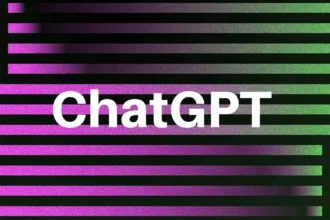Understanding Stochastic Parrot Theory
Oh, the mysterious world of large language models – where words come to life but meanings seem to be lost in translation! Have you ever heard of LLMs being called “Stochastic Parrots”? It’s like having a bunch of talkative parrots in a room, all chirping away without truly understanding what they’re squawking about!
Let’s delve deeper into the fascinating realm of Stochastic Parrot Theory and uncover why these LLMs are likened to chatty birds with no real grasp on the language they mimic. Picture this: AI models generating eloquent text that sounds legit but lacks any real comprehension…quite the feathered riddle, isn’t it?
Now, let’s unravel this cryptic comparison and shed some light on why exactly LLMs wear the title of Stochastic Parrots with pride. 🦜✨
In essence, the term “stochastic” hints at randomness or guesswork – a clue to how these crafty parrots string words together solely based on patterns in their training data. Essentially, they’re like chatterboxes following a script without fully grasping the script’s essence.
Let’s break it down further and explore why this analogy is more than just idle banter. Savvy insiders in machine learning reveal that these LLMs face limitations galore – from being slaves to their dataset content to often blurting out gibberish without realizing it. It’s like having a parrot reciting Shakespeare without knowing who Romeo and Juliet are!
But here’s where things get interesting: some argue that these chatty machines aren’t just mindless mimics. Would you believe it? There’s an ongoing debate among researchers on whether LLMs truly comprehend language or if they are just talented mimics putting on a linguistic show for us.
Now that we’ve scratched the surface of this whimsical world of Stochastic Parrots, doesn’t it make you wonder how much more there is to learn about these intriguing AI creatures? Stay tuned as we uncover more layers of this captivating mystery! 🤔🦜
Table of Contents
ToggleThe Origin and Definition of Stochastic Parrots
Let’s start by uncovering the origin and definition of the term “Stochastic Parrots” in the captivating world of machine learning. Coined by Emily M. Bender in a groundbreaking 2021 AI research paper, this metaphor describes a mesmerizing theory surrounding large language models. Picture this: these models excel at generating believable language but miss out on the core – understanding the meanings behind the words they churn out like talkative parrots on autopilot!
Diving deeper into this feathered analogy, “stochastic” traces its roots to an ancient Greek word meaning “based on guesswork” or “randomly determined.” On the other hand, “parrot” symbolizes how these Language Models (LLMs) merely echo words without truly grasping their essence. Essentially, they’re like those parrots who mimic speech without comprehending a single squawk!
Now, imagine AI systems recreating human-like text flawlessly but lacking actual semantic understanding beneath this linguistic facade. These Stochastic Parrots are masters at mimicking patterns from massive datasets but fall short when it comes to truly getting what they’re saying! It’s like having a parrot reciting Shakespeare – sounding grand but missing out on Romeo and Juliet’s tragic love story hidden between the lines.
As we delve into Bender et al.’s notion of Stochastic Parrots, there’s an intriguing layer we unveil. These chatty AI creatures are akin to clever mimics reciting scripts without decoding their deeper meanings. Just like those parrots that can mimic sounds without grasping context or emotions behind them.
So, next time you encounter sophisticated language generated by LLMs, remember that beneath that polished surface lies a Stochastic Parrot squawking away with statistical prowess but lacking true comprehension of the language dance it performs! Stay tuned as we unravel more mysteries surrounding these enchanting AI creatures! 🦜✨
Analyzing the Paper ‘On the Dangers of Stochastic Parrots: Can Language Models Be Too Big?’
In the captivating paper titled “On the Dangers of Stochastic Parrots: Can Language Models Be Too Big?” authored by Emily Bender, Timnit Gebru, Angelina McMillan-Major, and “Shmargaret Shmitchell,” a thought-provoking theme emerges: the concept of Stochastic Parrots in machine learning. This metaphor paints a vivid picture of how large language models excel at generating believable text while missing out on true semantic understanding beneath the surface. It’s like having parrots reciting poetry without grasping the underlying emotions and meanings!
The essence of this paper lies in highlighting the dangers posed by these Stochastic Parrots – AI systems trained on massive datasets to churn out human-like language without genuine comprehension. The risks outlined include environmental and financial costs, hidden biases leading to potential harm, and susceptibility to deception due to their inability to truly understand what they generate.
Furthermore, amidst the buzz surrounding these chatty AI creations, researchers question just how big is too big for these language models. The paper encourages reflection on ethical considerations when utilizing LLMs, moving away from a metrics-driven approach towards a more thoughtful and conscientious deployment of these powerful tools.
Implications of Stochastic Parrots in AI and LLM Development
Implications of Stochastic Parrots in AI and LLM Development:
When it comes to the intriguing world of Stochastic Parrots in AI and the development of Large Language Models (LLMs), things get pretty dicey. Imagine a scenario where these AI marvels can eloquently regurgitate complex language but miss the gist entirely – it’s like having a parrot recite Shakespeare without batting an eye about star-crossed lovers! These clever quacks rely heavily on data patterns to mimic human-like text, often leaving behind true understanding in their linguistic show.
Now, let’s dive into why this phenomenon isn’t just a feathered tale but has real implications for AI advancement and user experiences. Picture this: if unchecked, these Stochastic Parrots could wreak havoc on AI development, leading to major setbacks for industries relying on these technologies for crucial tasks. Think of it as letting loose parrots with impeccable diction but no grasp of actual speech content – chaos ensues!
So, what’s the deal with calling LLMs Stochastic Parrots anyway? The term “stochastic” hints at randomness or guesswork, while “parrot” symbolizes mindless mimicry without true comprehension – quite fitting for these language models that excel at echoing words but often lack real meaning beneath their polished facade. It’s like having a chatty parrot repeating impressive monologues without a clue about the plot twists within!
But wait, there’s more to this linguistic charade: dubbed as a neologism by skeptics, the Stochastic Parrot notion gained traction when Sam Altman cheekily declared himself as one. The term has even earned the prestigious title of 2023 AI-related Word of the Year by the American Dialect Society! It’s like a quirky badge worn proudly by those who see through the mirage of eloquence crafted by AI mimics.
In essence, understanding the implications of Stochastic Parrots in AI and LLM development is key to navigating this whimsical realm where parrots masquerade as master wordsmiths. So, next time you encounter flawless text generated by these models, remember that beneath that linguistic charm lies a birdbrain pecking away at data patterns without truly grasping what it chirps out! 🦜✨
- LLMs are called “Stochastic Parrots” due to their ability to generate text based on patterns in training data without true comprehension.
- The term “stochastic” alludes to randomness or guesswork, highlighting how these AI models string words together like chatterboxes following a script.
- Stochastic Parrot Theory reveals that LLMs have limitations, often producing gibberish and lacking real understanding of the language they mimic.
- Debate exists among researchers on whether LLMs truly comprehend language or are merely skilled mimics performing linguistic feats.




